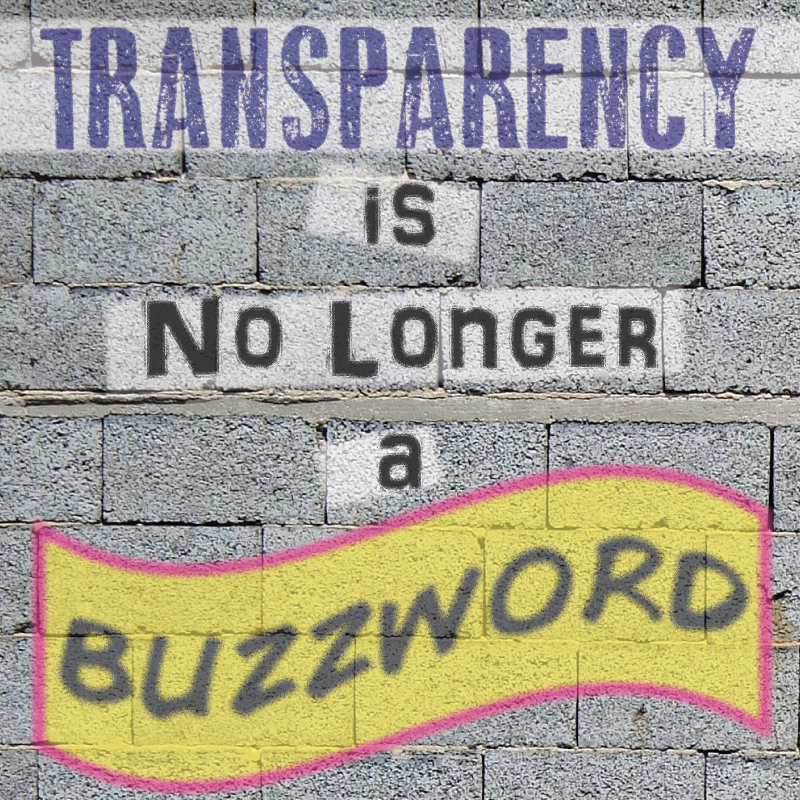Cooks and the customers they serve who can see each other – literally – both feel better about the experience. A recent study found that if cooks in a restaurant kitchen could see the customers ordering and enjoying their food and the customers could see the cooks preparing it, the food tasted better.

Transparency in the experience is magic!
If the cooks could see the customers, but not the other way around, satisfaction with the experience increased by 10%. What was really magical, though, was what happened when they could see one another.
“But even more striking, when customers and cooks both could see one another, satisfaction went up 17.3%, and service was 13.2% faster. Transparency between customers and providers seems to really improve service.” -Ryan W. Buell, Assistant Professor at Harvard Business School
This wasn’t just a subjective study.
Researchers timed the service and observed behaviors which translated to better food. Cooks who could see the customers and knew they were being seen by customers were more likely to cook eggs to order instead of precooking eggs for orders not yet received. The cooks cared more about the outcome of what they were delivering.

Read more about the study on Harvard Business Review (tiered subscriptions may apply.)
Customers appreciate the effort of preparation for them.
In another scenario, researchers watched as customers who preordered sandwiches either arrived to receive their already-prepared sandwich or stood in line to watch the preparation. The customers who stood in line reported higher satisfaction with their meals than those who didn’t. This flies in the face of assuming any customer effort will result in lower satisfaction, but supports the idea that customers will appreciate the process they witness.
Combine these findings with how customers want to interact directly with technical experts on social media, and it behooves brands to think about compelling ways to let customers in on the preparation. People may not want to understand the finer details of widget making, but they might get a kick out of seeing how the color of the widget is decided. Using social media, brands could post photos on Instagram and tweet out the questions the design team is asking.
On the flip side, employees who see their customers will care more about the experience they are delivering. Instead of trying to remind your employees they are serving “the customer” – a nameless, faceless person or business – what would happen if they had to face the customer directly?
Smoke and mirrors
Personas try to achieve this, but it’s not the same as saying, “Ok, we’re going to deliver our invoices via Skype to our customers. We’ll talk to them about the invoice directly.” The person preparing those invoices will have a bigger stake in getting them right and making them easy to understand.
I’ve seen big corporations try to remind employees about “the customer” in laughingly ineffective ways. One Fortune 50 company decided to put felt blankets on office chairs and conference room chairs that had “CUSTOMER” in lettering on them. The intention was to help employees remember why they were doing what they do. The result was an easily overlooked and impersonal piece of furniture. Literally.
To top it off, the leaders who implemented the “Customer In The Room” program hadn’t observed customers dealing with their frustrating processes or listened to customers directly. They were as detached as they could be.

Instead of trying to create the “perfect” customer, what if we just invited them into the process a bit more? Helping employees see customers helps them feel more appreciated and willing to put in the extra effort. Helping customers see the hard work of employees can lead to more satisfaction.
I’m telling you. Transparency is magic. What can you do to provide more of it in your organization?
Image credits: Pavel P., Lplatebigcheese, ep_jhu via Creative Commons license





I agree that for restaurant customers, having visibility into the food preparation area makes the dining experience more interesting – some of the time. But people I know who have worked in restaurants have confided to me that there are things that go on that patrons are better off not seeing, let alone knowing about.
Which calls into question that more is better when it comes to transparency. This is what I discovered when I wrote an article, “A Contrarian View of Transparency” [http://customerthink.com/a-contrarian-view-on-transparency/]. The mantra I had been hearing played to the idea that more openness between buyers and sellers would foster many positive outcomes. But as I dug into my article, I learned that this is not always the case. In fact, just as there are risks for opacity, there are different risks for openness.
But I agree that providing internal employees (e.g. product engineering, inside sales, support staff) the opportunity to visit clients on site has demonstrative benefits. When I worked for a chemical manufacturer in the 1980’s, we made sure that the order desk staff regularly visited our customers – printing companies – so they could learn how our products were being used, and why ‘urgent’ meant urgent when orders were placed. Seeing a large printing press idled for lack of ink and paper gave everyone a visceral understanding of our customers’ working environment, and greater empathy when helping them with service problems.